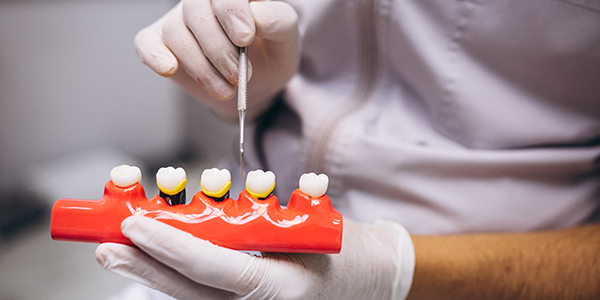Bone Augmentations is the name given to new bone formation techniques performed in case of bone deficiency in the area where dental implants will be applied.
Before the implant procedure, it is checked by our specialists whether there is a bone structure with sufficient height and volume in the area where the treatment will be performed.
In order for our patients who come to our clinic for treatment to have healthy implant-supported teeth, the implants must be surrounded by at least 1 mm of bone. In other words, the longevity of a patient's implant is directly proportional to the presence of adequate bone support in the implanted area.
Bone Augmentations is a treatment method for;
Our elderly patients,
Patients with a history of traumatic tooth extraction,
Patients who have been toothless for many years,
and when there is not adequate bone tissue in the area to be implanted.
A clinical examination is performed by our specialists to determine whether our implant patients need Bone Ogmentation treatment. The presence or absence of adequate bone tissue is determined by measuring the panoramic x-ray with special software programs on the computer. In dental volumetric tomography (3D), bone dimensions can be measured in three dimensions.
After all these procedures, if our specialists detect inadequate bone measurement before implant procedure, Bone Augmentation Methods are applied.
What is Bone Augmentation?
Bone augmentation is a jaw surgery method used to compensate for the reduction in bone volume caused by lost teeth or gingivitis at an early age.
The word augmentation means to multiply. The augmentation method is one of the most commonly used procedures in jaw surgery in dentistry. It is the most commonly used method by dentists when patients need implant procedures and jaw aesthetics.
Thanks to Bone Augmentation, which is applied to treat tooth loss in the patient's jawbone due to tooth extraction or melting or collapse due to a different reason, the bone presence required for the implant is created.
What are the Types of Bone Augmentation?
Bone augmentation is a jaw surgery method used to compensate for the reduction in bone volume caused by lost teeth or gingivitis at an early age.
In addition to bones taken from the patients' own bodies, bone augmentation is also performed with inorganic materials or synthetic materials. In Bone Augmentation procedure, which is mostly performed in the lower jaw area, other treatments are performed after the bone volume is adequate.
The methods of creating new bone using Bone Augmentation can be listed as follows;
Sinus Lifting (Sinus Base Elevation): If there is no bone in the posterior region of the upper jaw, it is an operation technique that can provide new bone formation in the vertical direction to the sinus area.
Split Osteotomy (Sandwich Technique): In case of inadequate bone thickness, it is a form of treatment in which the bone is opened like a sandwich and an implant is placed in between.
Box Technique: It is a treatment method made with artificial bone materials and thermoplastic molding technique.
Block Bone Formation Technique: It is a form of treatment in which a block of bone is taken from the back of the jaw or the hip and placed in the missing area. If there is severe bone deficiency in partial or total edentulism, block bone transplantation is mandatory. If such an operation is to be performed, it is necessary to wait at least six months for bone formation before implant placement. Considering the 3-month waiting period after the implant, a treatment process of approximately nine months should be expected. However, the most important factor for dental implants to remain successfully in the mouth for a lifetime is to have healthy bone around them.
Bone Formation Using Bone Powder: Bone augmentation is the most common treatment for implant procedures to be performed in patients with a few missing teeth. Animal or synthetic bone powders are usually used. It may also be possible to place implants at the same time as the session in which bone powders are used. Bone powders can sometimes be taken through the patient's mouth without creating a wound. This bone is the person's own bone, called autogenous bone. Autogenous bone is much safer and more successful than artificial bone powders. The dentist always wants to obtain bone with autogenous bone, but if this is impossible, artificial bone powders are used.
What are the Advantages of Bone Augmentations?
The bone augmentation method increases the success of the implant procedure.
Bone augmentation, which ensures that the jawbone in the area is adequate, dense, hard and strong, now provides success in many cases where implants could not be applied in the past.
Bone augmentation method provides an advantage to the dentist and the patient with tissue and bone augmentation if the bone thickness is not adequate in the bone area intended for the implant.
In the bone augmentation procedure, which is applied by placing bone grafts taken from the patient's own bones or synthetically produced bone grafts, block or granulated bone taken from the jaw bones, hip bone or tibia can be used. Thus, the patient's oral health is created for the desired treatment.

